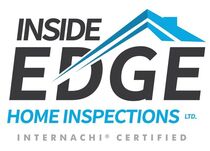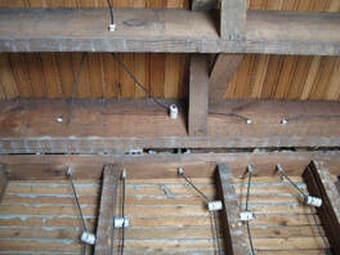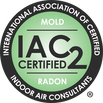Mike's Home Inspector BlogMichael Burfitt |
|
As both a professional home inspector and a father to a young child, my biggest concern is home safety: particularly of hidden dangers in a home that might not be immediately apparent. One such danger is Knob and Tube (K&T) wiring, which was commonly used from approximately 1880 up until the 1940s. Here is a picture of what K&T wiring commonly looks like: As you can see, once you know what to look for it becomes obvious, however it is often buried behind walls, in attics, in crawlspaces and other areas that are difficult to access. Contrary to popular belief, K&T is not inherently unsafe by itself, and it is not illegal to use in a residential property, although new installations of K&T in homes most certainly are! Furthermore, there are some advantages, such as better heat dissipation and a near guarantee it was installed by someone highly skilled as it was very difficult to install K&T properly.
With that said, I will always recommend an electrician evaluate a K&T system and if I were buying a home with K&T I would make immediate plans for its removal without exception. What is wrong with K&T and why do I personally consider it necessary to remove? Knob & Tube is Old and Outdated Given that K&T has not been widely installed in North America for almost 90 years, it is guaranteed that any K&T wiring installation is well past the expected lifespan of about 50-60 years due to deterioration of the cloth sheathing that was used. These systems are also underpowered for modern electrical needs and have almost certainly been modified with various degrees of skilled DIY’s, contractors, or electricians. There is also the concern of added insulation not allowing heat to escape from these wires, which can be a significant fire hazard. These Systems are Not Grounded All modern electrical systems are required to have a grounding wire (this is the bottom part of the plug), and this has been a requirement since about 1960. Therefore, since almost all K&T predates this timeframe, it can be safely assumed that a K&T system is not grounded. I plan on doing plenty of articles about residential electrical in the future but in the meantime just understand a ground is a safety feature designed to protect against electrical shock and all homes should be insured against ground faults. Speaking of insurance: Knob & Tube Has Potential Insurance Implications I would someday love to create a neat little table of all insurance providers in Nova Scotia and what their policy is on insuring houses with K&T. While I unfortunately do not have that information, I can safely assume that almost all insurers will either refuse to offer coverage to a home with K&T or require a significantly higher premium and/or deductible. It should also be mentioned that finding K&T in an attic or crawlspace is not by itself a cause for panic: due to the difficulty in removing K&T it is often just abandoned and left in place. This is not a concern if it is properly decommissioned. A home inspector or electrician can determine if your home has active K&T and can offer recommendations of the next steps to ensuring you have a safe electrical system. |
Archives
July 2024
Categories
All
|
|
Inside Edge Home Inspections Ltd.
Halifax, NS 902-209-9921 [email protected] Proudly Serving the HRM & Central Nova Scotia |


 RSS Feed
RSS Feed

